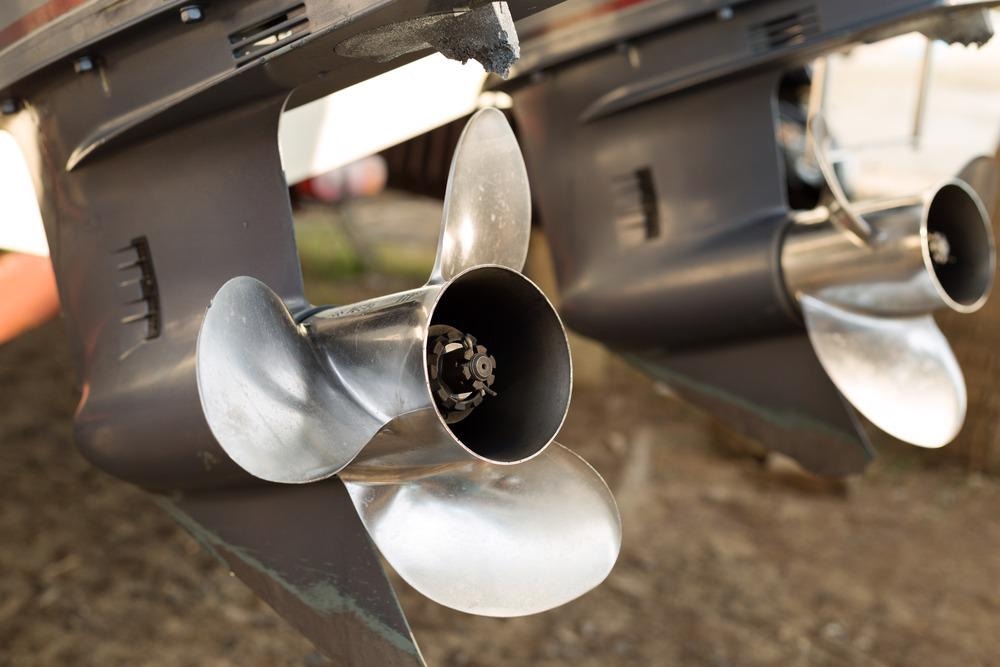Making use of the recent strides in carbon-neutral vehicle technology, the electric boat manufacturer Candela has managed to achieve new heights in carbon-neutral vehicle technology. Their latest motor, the C-POD, is capable of an 80% propeller efficiency, making it the most efficient all-electric motor of all time.

Image Credit: Ruslan Kudrin/Shutterstock.com
As the advancements of electrical engines are relatively contemporary, their perception is typically less favorable than combustion engines. A study published in the journal Transport Policy revealed the public found the “reliability”, “range” and “battery life” as three of the most unfavorable aspects of electrical batteries (She et al., 2017).
Candela’s C-POD engine is one among many new advancements in the field that will completely shatter these perceptions. The propellor efficiency of this battery, for example, is a staggering 80%, compared to the 70% efficiency of conventional combustion engines. This advancement makes the C-POD the most efficient boat motor ever manufactured.
Consequently, this increased efficiency means the C-POD can provide a greater range for the same amount of power input. Reports by Candela have shown that this boat motor has a 23% increased range compared to its highest performing competitors.
C-POD’s Efficiency Innovations
There are several innovations that the electric boat manufacturer Candela has created to reach this efficiency. Firstly, the C-POD uses strong and ultralight composite materials by creating its hull entirely from carbon fiber. Though expensive, using this material increases efficiency by lowering the maximum weight of the battery without sacrificing the strength of the hull.
Secondly, this electric engine is fitted to the boat via the most effective method of implementation, a fully submerged hydrofoil. Like the airfoil of an airplane wing, hydrofoils are very specifically shaped components, with their camber and thickness meticulously designed to minimize drag while traveling through a fluid, such as water.
Finally, the C-POD utilizes avionics to adapt to situations with internal intelligent flight controllers. These flight systems use ten sensors to accurately predict the engine's current state, including its velocity, position, and heading relative to the water's path, and predict its future state. The avionics can then alter the hydrofoil to maximize efficacy and stabilization for these predicted future states, ensuring the engine is always high-performing no matter the environment.
Zero Carbon Emissions Output
Along with this monumental improvement in boat motor efficiency, the C-POD holds even more advantages over conventional combustion motors, addressing public concerns about electric-powered vehicles and their maintenance issues.
The most apparent improvement of the electric motor is the fact that they have a complete lack of CO2 emissions. As global warming becomes an increasing concern, with carbon dioxide emissions projected to surpass 55 billion tons/yr by 2023 (Conca, 2021), reducing emissions as much as possible is ideal. Electric vehicles such as motorboats and electric cars contribute to a dramatic shift in the market as industries aim to become carbon neutral.
As opposed to combustion engines, electrical engines do not require oil changes or liquid fuel to be added. Because of this, the C-POD does not require any maintenance, as the motor can run without the need for filter and oil changes. Most importantly, C-PODs do not need to be winterized, an arduous task of completely draining and cleaning that every conventional outboard motor requires annually. Neglecting winterization may ruin a combustion engine completely by Spring.
Enhancing Electrical Quietness
Not requiring maintenance changes is one of the main reasons the Candela C-POD can be easily implemented underwater: conventional outboard motors must have their engines out of the water, with the propeller and gearboxes submerged.
As previously mentioned, having a wholly submerged motor and hydrofoil is beneficial for efficiency purposes. Consequently, however, other advantages arise from this engine positioning. On a practical level, having the engine underwater means that the entire system can be cooled by using the seawater as it travels through. Not requiring a coolant reduces weight and also helps to prevent maintenance upkeep.
The fact that the engine is electric and submerged in water also ensures that it is soundless. Even though quietness is characteristic of electric motors, the C-POD enhances this ability due to its underwater placement.
The Candela manufactured C7 boat that contains the C-POD currently retails for around €300,000. Serial production of the C-POD has already begun, but high demand has delayed orders. Customers are likely to receive their motor in late 2021.
References and Further Reading
Candela, (2021) Introducing the most efficient boat motor ever - the all-electric CANDELA C-POD. [online] Available at: https://www.mynewsdesk.com/candela-speedboat-ab/pressreleases/introducing-the-most-efficient-boat-motor-ever-the-all-electric-candela-c-pod-3120718
Candela, (2021) Technology - Candela. [online] Available at: http://candela.com/technology/
Conca, J., (2021). What's Happening? Global Emissions Are Still Rising. [online] Forbes. Available at: https://www.forbes.com/sites/jamesconca/2021/07/23/whats-happening-global-emissions-are-still-rising/.
Jackson, G., (2017) Winterising Your Outboard Motor - Douglas Marine. [online] Douglas Marine. Available at: http://www.douglas-marine.co.uk/winterising-outboard-motor/.
She, Z., Sun, Q., Ma, J. and Xie, B., (2017) What are the barriers to widespread adoption of battery electric vehicles? A survey of public perception in Tianjin, China. Transport Policy, 56, pp.29-40. Available at: https://doi.org/10.1016/j.tranpol.2017.03.001
Disclaimer: The views expressed here are those of the author expressed in their private capacity and do not necessarily represent the views of AZoM.com Limited T/A AZoNetwork the owner and operator of this website. This disclaimer forms part of the Terms and conditions of use of this website.